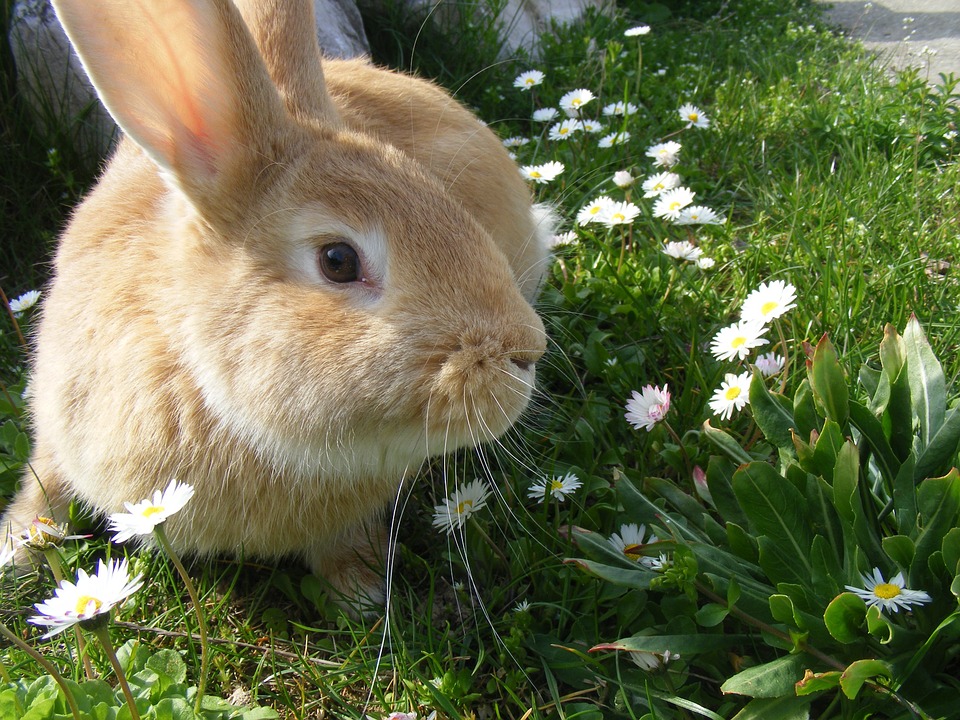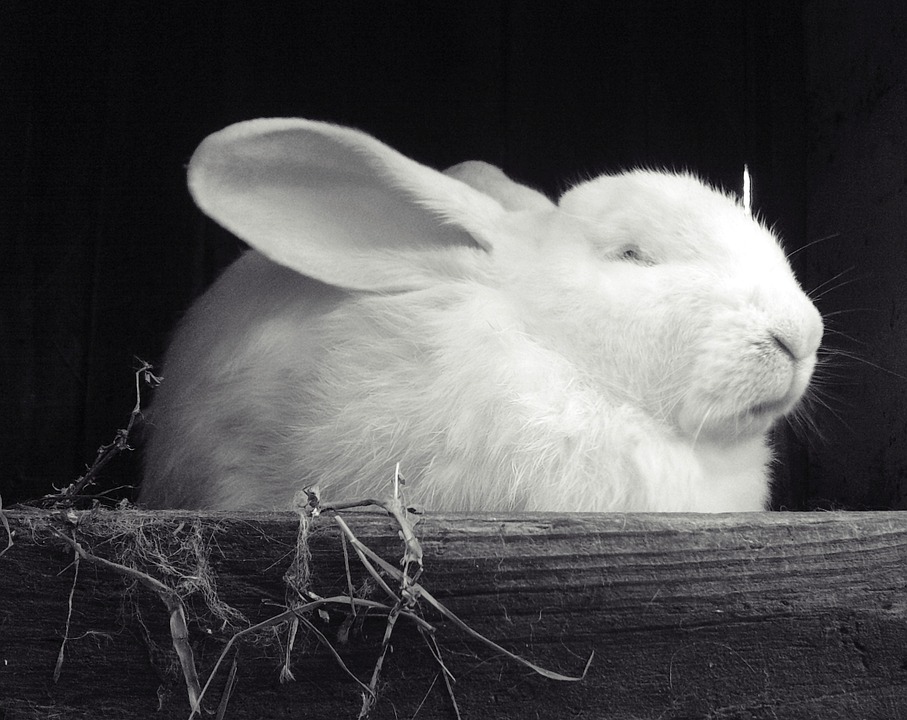This article explores the fascinating world of rabbit terminology, unraveling the collective nouns used to describe these charming creatures. We'll dive deep into the history of these terms, examine their usage in various contexts, and uncover some intriguing facts about rabbit behavior and social structures. Join us as we journey into the captivating world of rabbits and discover the diverse ways we describe their collective presence.
Part 1: Unveiling the Common Collective Noun - A "Warren" of Rabbits

1.1 The History of "Warren"
The term "warren" has been a mainstay in describing groups of rabbits for centuries. Its origins can be traced back to the Old French word "guarren," which referred to a forested area or a place where rabbits naturally thrived. This term evolved into "warren" and eventually became the standard in English, capturing the essence of rabbit habitats.
1.2 The "Warren" as a Habitat
A "warren" is not simply a name for a group of rabbits; it also denotes the complex network of burrows that rabbits excavate and inhabit. These subterranean labyrinths provide essential shelter, protection from predators, and breeding grounds for the rabbits. Each warren is a carefully constructed and interconnected system, offering a safe haven for the rabbit community.
1.3 Social Structure and Hierarchy within a "Warren"
Rabbits are social animals, and a "warren" is not just a haphazard gathering of individuals. It reflects a well-defined social structure with clear hierarchies. The dominant male protects the territory, mates with the female, and oversees the well-being of the group. Each rabbit understands its position within this social order, contributing to the stability and cohesion of the warren.
Part 2: Beyond "Warren": Alternative Collective Nouns for Rabbits

2.1 "Bevy" - A Group with a Purpose
While "warren" is the most familiar term, the English language offers alternative collective nouns, each adding a unique nuance to the description of a group of rabbits. "Bevy" conjures an image of a gathering with a specific purpose, whether it's foraging for food, playing, or engaging in social interactions. It suggests a lively and energetic group of rabbits engaged in a shared activity.
2.2 "Colony" - A Shared Community
"Colony" emphasizes the communal aspect of a rabbit group, highlighting their shared territory and living arrangements. It's a term particularly apt for larger groups of rabbits that inhabit a specific area, where their lives intertwine and they depend on each other for survival.
2.3 "Nest" - A Group of Young Ones
"Nest" refers to a group of young rabbits, often still dependent on their mother. It emphasizes the vulnerable and dependent nature of these young creatures, highlighting the protective and nurturing role of the mother rabbit. The term evokes an image of a cozy and protected gathering of newborn rabbits.
Part 3: The History and Evolution of Rabbit Terminology
3.1 From Ancient Roots to Modern Usage
The use of collective nouns for animals has deep historical roots, dating back to ancient times. These terms have evolved over centuries, influenced by cultural beliefs, observations of animal behavior, and linguistic changes. The term "warren" has been in use for a long time, becoming a standard term in the English language by the Middle Ages.
3.2 The Influence of Folklore and Literature
Rabbit folklore and literature have played a significant role in shaping our perceptions of these creatures. Tales and stories often feature groups of rabbits in various settings, contributing to the development of specific collective nouns. In English folklore, rabbits are associated with fertility, magic, and good luck, reflecting in the use of collective nouns like "bevy" and "nest."
Part 4: Understanding Rabbit Behaviour and Social Structures
4.1 The Importance of Social Communication
Rabbits are social animals, and communication plays a vital role in their lives. They use a range of signals, including scent, body language, and vocalizations, to interact with each other. Scent plays a crucial role, as rabbits use urine and faeces to mark their territories and communicate with other rabbits.
4.2 The Role of Dominance and Hierarchy
Rabbits live in complex social hierarchies, with a clear pecking order within a group. The dominant male rabbit typically controls the territory and mates with the females, ensuring the survival and propagation of the group. This social structure helps maintain order and minimize conflict within the warren.
4.3 Burrowing Behaviour
Burrowing is a fundamental behavior for many rabbit species, providing safety and shelter from predators and harsh weather conditions. Rabbits create intricate and complex burrow systems, often with multiple entrances and tunnels, allowing for safe passage and efficient communication within the warren.
Part 5: Rabbit Terminology in Other Languages
5.1 Global Variations in Collective Nouns
The use of collective nouns for rabbits varies across different languages and cultures, reflecting their specific understandings and perceptions of these animals.
- In French, a group of rabbits is called a "garenne," a term closely related to the English "warren."
- In German, a group of rabbits is called a "Hasenkolonie," which translates to "rabbit colony," emphasizing their communal living arrangement.
- In Spanish, a group of rabbits is called a "madriguera," referring to their burrows, highlighting the importance of their underground homes.
5.2 Cultural Influences on Terminology
The choice of collective nouns for rabbits often reflects cultural perceptions and folklore surrounding these animals. In some cultures, rabbits are associated with fertility and abundance, leading to the use of collective nouns like "bevy" and "nest." Other cultures may focus on the social nature of rabbits, using terms like "colony" and "community" to reflect this aspect of their behaviour.
Part 6: Fun Facts about Rabbits
6.1 The Power of Scent
Rabbits have an exceptional sense of smell, using their noses to navigate, communicate, and detect potential dangers. They mark their territories with urine and faeces, creating scent trails that other rabbits can follow. Their acute sense of smell allows them to detect predators from a distance, alerting the warren to potential threats.
6.2 Binky Behaviour
A "binky" is a joyous and energetic behavior often exhibited by rabbits, displaying a sudden leap into the air, twisting of the body, and a kick of the legs. Binkying is a sign of happiness and excitement in rabbits, often triggered by positive stimuli such as playtime, good food, or a sense of contentment.
Part 7: FAQs
7.1 What is the best way to describe a group of rabbits?
The best way to describe a group of rabbits depends on the context and the specific characteristics of the group. "Warren" remains the most common and widely recognized term, but alternative terms like "bevy," "colony," and "nest" can be used to add nuance and variety to your descriptions.
7.2 What are the differences between a "warren" and a "colony" of rabbits?
While both terms refer to groups of rabbits living together, "warren" emphasizes the intricate network of burrows they create, while "colony" emphasizes their shared living arrangement and communal life.
7.3 How many rabbits are typically in a warren?
The number of rabbits in a warren can vary significantly, depending on factors like food availability, habitat size, and predator pressure. A typical warren might hold anywhere from a few rabbits to several dozen.
7.4 Do all rabbits live in warrens?
Not all rabbits live in warrens. Domesticated breeds, like those kept as pets, may not have the instinct to burrow. However, most wild rabbit species create burrows as a natural part of their behaviour.
7.5 Are rabbits social animals?
Yes, rabbits are highly social animals. They live in complex social groups with established hierarchies, and communication is crucial for maintaining order within the group.
7.6 What are some other interesting facts about rabbits?
Rabbits are known for their incredible ability to reproduce quickly, with a gestation period of only about 30 days. They have also been used in many experiments and studies, contributing to our understanding of various biological processes.
Everyone is watching
-

Do Rabbits Lay Eggs? (The Surprising Truth)
OTHER TYPES OF PETSThis article will unravel the common misconception that rabbits lay eggs, exploring the fascinating world of r...
-

Can Rabbits Eat Grapes? A Guide to Safe Rabbit Treats
OTHER TYPES OF PETSThis comprehensive guide will explore the safety and suitability of grapes for rabbits, providing detailed inf...
-

What's a Group of Rabbits Called? (A Comprehensive Guide)
OTHER TYPES OF PETSThis article delves into the fascinating world of rabbits, exploring the various terms used to describe a grou...
-

Predators That Hunt Rabbits: A Guide to Natural Enemies
OTHER TYPES OF PETSI've always been fascinated by the circle of life, that delicate dance between predator and prey. Growing up ...
-

Are Rabbits Nocturnal Animals?
OTHER TYPES OF PETSThe question of whether rabbits are nocturnal animals is a fascinating one, with a surprisingly complex answer...
